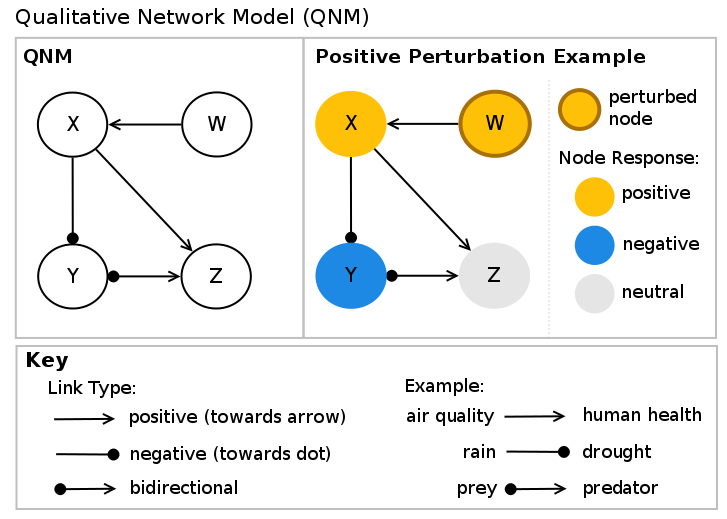The environmental and human systems of Puget Sound are inextricably linked.
As inhabitants of this region, we both affect and are affected by the environment around us.
For example, we benefit from the ability to fish, sail, and grow crops. At the same time, we are impacted by wildfire smoke, heatwaves, legacy pollution, and historical inequity.
The Human System Model brings together critical aspects of the project’s biophysical models into one assessment to test how various aspects of human wellbeing respond to environmental change.
This tool will help us identify solutions with the potential to endure and minimize tradeoffs needed to reach our collective, desired future.

What type of model can fully integrate the complex web of environmental and human factors and evaluate their responses to change?
Qualitative modeling
At its core, the Human System Model is a conceptual model in which diverse components of the biophysical and human systems are connected in a web (or network) by how they interact with one another, using positive or negative relationships. These relationships are determined using existing information from literature and expert judgement.
The qualitative models we plan to use for the human system have the ability to operationalize conceptual models and simulate potential responses to change. These approaches use little or no quantitative information, requiring only a qualitative or subjective understanding of system structure and interactions.
The responses of model components are investigated by applying a change – or ‘perturbation’ – to the qualitative model and observing how the change propagates through the system. The results are interpreted as hypotheses that can then be verified with other approaches (e.g., monitoring, experiments, or other modeling).

This model is part of the Puget Sound Integrated Modeling Framework project. Want to head back to the main PSIMF page?

